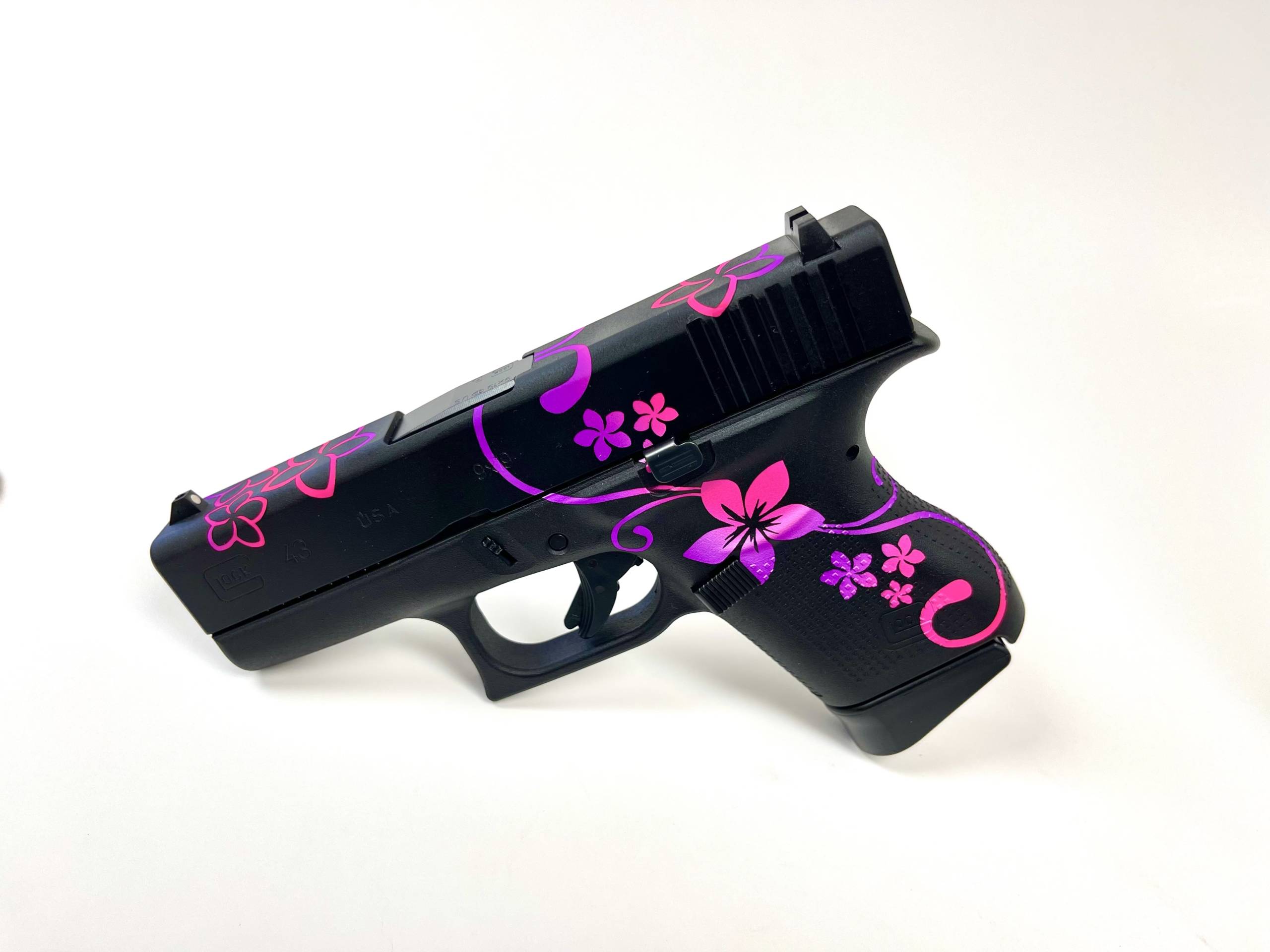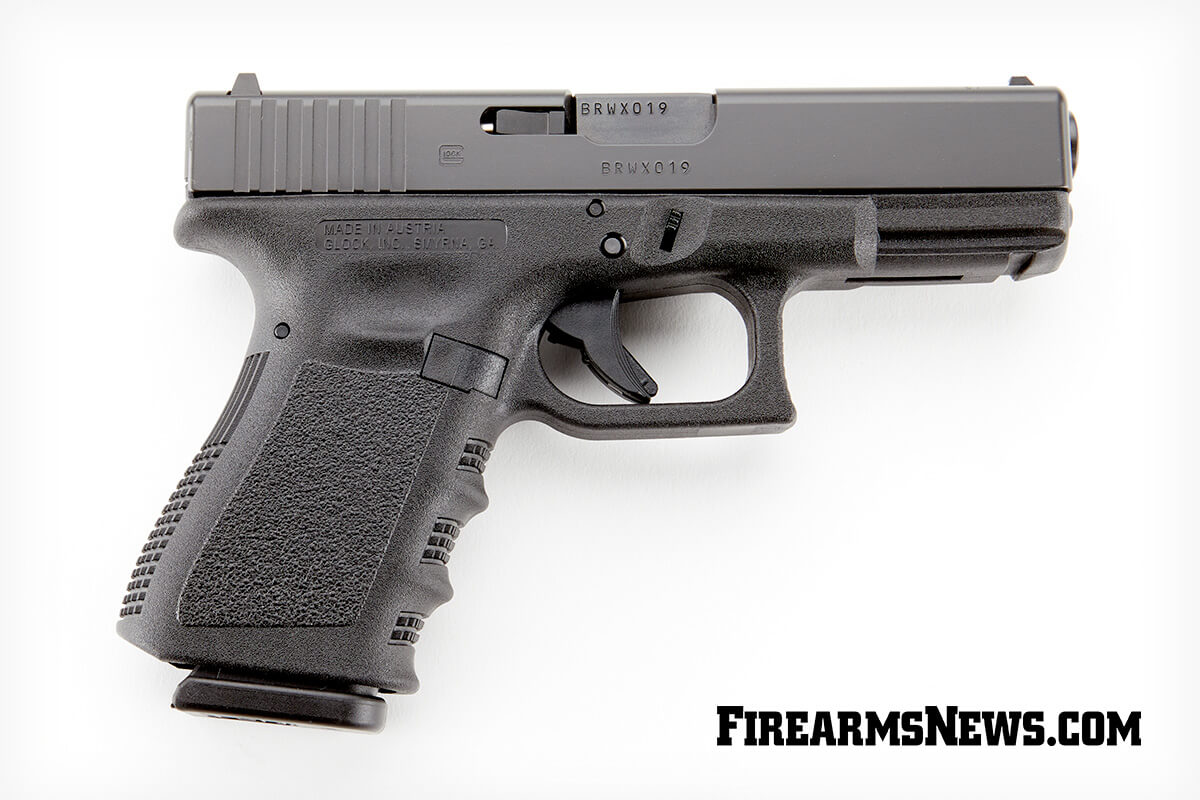History Of The Glock - A very common question for new Glock buyers is "What is my Glock?" Prior to the release of the 4th generation, Glock was not officially recognized beyond the model number, which gave rise to the idea that "a Glock is a Glock is a Glock - they're all the same." But early collectors noticed the difference and formally agreed upon three main periods, or "generations," to be classified. The nomenclature became common on Glock after the release of Gen 4 in 2008 and their promotional literature now points to earlier Gens in some places.
The image below will help you clearly identify which model your Glock is part of, but note that there is considerable overlap as the models are gradually being replaced. Also, 3rd generation guns are still in production due to California handgun restrictions, so you may have a Gen 5 gun that is older than your Gen 3! Photo notes identify key features that are consistent across generations, but minor changes to markings and internals can be found at different times - and sometimes back and forth - within the same gen. Therefore, the division between generations is only determined. Improvements to the main frame, many parts are interchangeable between two or more, but some changes only last a short time between generations.
History Of The Glock

Version 1 is a series of changes. The initial design, although reliable, is still under development. A consistent feature is the handle structure that wraps around the entire handle (no front or back wire checks). It has a simpler feel than its predecessors and is considered a "limestone structure" by collectors. Early guns have mild stainless steel barrels, early Parkerized finishes (not exceeding the AD prefix) and barrel wall thicknesses not exceeding the AN prefix. There are also many changes to the magazine, case and small internal parts. All guns will have Austrian proof marks, but will not have matching mountings or numbers. Early guns (US-East) and guns destined for the European market do not have serial number plates on their frames. Most early rifles were still equipped with sights known as "weekend sights" because of their weakness. The standard (fixed) sights are period correct, although the target version charges a premium. All frames have a half-moon pattern below the front strap except for the 19 that was made.
Is The Glock 48 The New \
The 2nd generation is what many novice collectors or even uninformed dealers will refer to as "Gen 1". The confusion comes from two factors: 1. Gens 1 are very rare and many casual observers have never seen them before. 2. Many models were introduced in the Gen 2 line and some consider them "Gen 1" because it was the first issue of that particular model. To make things clear, if you have a Model 20 or more, you have a Gen 2 Glock even though it is the first generation of the gun produced. The obvious difference between the 1 and 2 for the 17-19 models is the addition of checks to the front and back straps as well as a change in the structure of the side panels (deeper than the 1st model). Gen 2 also saw the introduction of 5 additional calibers and all non-.380/9mm guns were equipped with a second locking pin to prevent frame breakage from heavy recoil. It is important to note that the number of pins does not determine production, as many believe. 9mm frames from Gen 1 well to Gen 3 production have only two pins while all other calibers have 3 pins. All full size frames are on magnetic relief below the front bezel.
By the late 90s, Glock had become a dominant force in the American gun market, and other manufacturers were trying to copy the design. This puts some pressure on the Glock design to "innovate" to try to stay ahead of the pack. Gen 3 changes actually began in 1995 with the introduction of the sub-compact. It was believed that the grip would be too small for many people, so a finger groove was built into the front strap to try to increase and save purchase. . Rotation due to recoil. This began a 3-year changeover period until a complete changeover was achieved on all models in '98. Some large frame transitional models are quite rare (especially ported variants) – see https:///transitional/ for more info. A Gen 3 will have a fingerprint notch on the front strap, a thumb indentation and a track on top of the handle. Fire equipment which is made in the form of dust cover. As mentioned above, for 9mm calibers only, you still get the 2-pin design during the first Gen 3 run. The frame was upgraded to all 3-pin in the early 2000s.
By the advent of the 4th generation, Glock had become the ubiquitous "handgun", but found itself challenged with increasingly innovative designs. One of the fads that has caught on with consumers is interchangeable back straps, better than hand grips of different sizes. Glock first experimented with narrow grips on the Gen 3 SF models (they were only available in .45 and 10mm calibers). The modular backstrap system brings SF proportions to the full frame with two sizing options and even a beaver tail adapter insert. The internals were redesigned from the ground up and were actually built with the .40S&W recoil profile in mind then the 9mm (where Gen 1-3 were designed in contrast). This should prove to make the .40 model more durable while the 9 should continue to be reliable. The grip structure has been changed to a more aggressive pattern on the sidebar - this, again, was first attempted in the short run of Gen 3 rifles with the structure called "RTF2". RTF2s are technically Gen 3, possibly Gen 3.5 and only produced from 2009 to 2011 (apart from special editions) - see image at the bottom of this page.
The first Gen 5 models actually preceded the release of the new slim-line subcompact models 42 and 43. These models began as redesigns with all new internal components to accommodate the smaller size, and the FBI played a role in these changes. Out to the big guns with their request for the Model M. Models 19X, 42, 43, 43X, 44, 45, and 48 technically did not carry the Gen 5 designation on the slide, but were never more compatible with other Gen 5s. Guns 17 and 19 were officially released in 2017 as Gen 5s, and other 9mm and .40 S&W offerings followed, but no .357 Sig, 10mm or .45 ACP offerings have been offered so far. Important changes of note include "Mark" barrel, full friction control. , removal of flared magwell and front line finger groove.
Glock Gen4 Gun Cleaning Mat
There are (at least) two other designs that may meet the actual reduction in generation differences or differ enough to be difficult to determine from the above discussion: 1. RTF2 third gen and 2. FBI M-series.
RTF2 is short for "Rough Texture Framework, Second Edition." The first model was only built as a prototype and never released although at least one is on display at the Cody Firearms Museum. Designers landed on the second generation and new molds were created to integrate this grip structure with the standard design of the 3rd generation. All the internals are the same so the only difference will be the structure of the grip. As you can see from the exploded view, the entire grip is covered in little pyramids - and let me tell you, they are sharp! This gun really sticks in your hand, even when wet. From 2009 to 2011 Glock marketed them mostly to the police but the design is a clear step between the third and fourth generation guns. The pyramid concept is carried forward but with large pyramids RTF2 often wears and wears. See https:///rtf2g/ for more images.
Finally, we should also talk about the FBI's M Series pistols. The 17M and 19M actually predate and likely inspired the Gen 5 rifle. They were built to specifications requested by the FBI as new department service weapons and incorporated some design changes from the Mini 42/43 as well as some new ideas. These were the first Glocks to feature ambidextrous controls and rifling modifications designed to improve accuracy. On the outside, the M guns will look and feel almost exactly like the Gen 5 - the main difference is on the inside, so most collectors will consider them part of the Gen 5 family. However, for the right person, the "M" added to the model designation will make a big difference in the price they are willing to pay.

History of glock 19, glock 26 history, price of a 40 glock, whats the smallest glock, cost of glock 26, pic of glock, types of glock, the glock store san diego, which is the best glock, pictures of glock 40, history of glock, models of glock